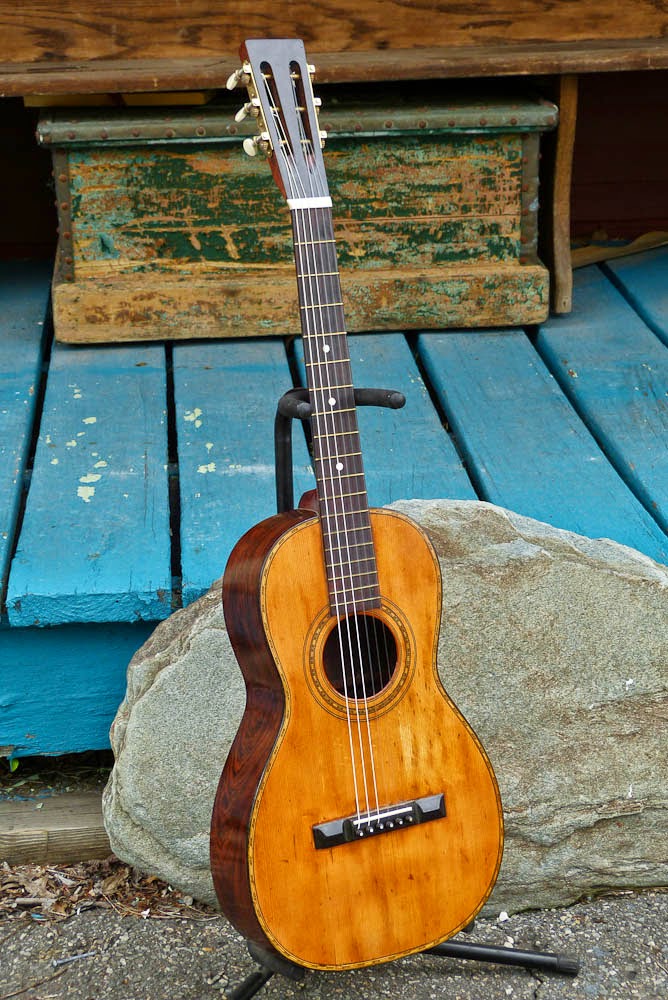c.1880 American-made Martinesque Parlor Guitar
From a short distance this looks a bit like an 1870s-1880s Martin-made size 1 or 2 instrument but when you dig into the details it quickly becomes apparent that it's almost certainly not: ladder bracing, t-style frets, the wrong sort of volute to the headstock rear and other inconsistencies just add up. That's not to say it's a bad instrument: it's not! This is solid spruce over Brazilian rosewood with a build that would've been "up there" with concurrent Washburn, Bay State/Haynes and similar makes.
This guitar is currently being considered for purchase by a friend/customer of mine and so she took it down here for investigation. At the same time I restrung it with nylon strings (it had an ancient set of silk & steels on itwhich = bad intonation as well as too much tension) and gave it a quick setup so she could at least try it "in full faith" before deciding whether or not to buy it from its owner.
I have no idea of the maker but I'd guess based on the general make that it dates to the 1880s/90s and is an East Coast make of some sort. It's vaguely Martin-ish in styling and looks but the design is solidly in the Bay State/Haynes sort of territory. It's interesting, for sure, and has a sound comparable to 1880s/90s Washburns.
The guitar survives with remarkably few (and tiny) cracks. It's just under 12" at the lower bout.
I'm guessing that the big wide bone nut is unoriginal...
Rosewood board, pearl dots, and original-looking brass frets.
Originally all this purfling and rosette material would've been quite bright and colorful. Over the years the Kelly greens and bright yellows and reds faded to the muted vintage look we have here. There's an extra coat of varnish all over the instrument but it doesn't look distasteful.
This bridge looks pretty period to me... and has a bone saddle. The pins are newer, though.
It's hard to argue with Brazilian rosewood despite the weather-check and finish muck-ups.
The volute is really not pronounced at all... it's almost not there.
Apparently these Waverly-looking replacement tuners were handmade in Italy for this guitar some time ago.
Someone must have installed a tailpiece on this at some point. I blame the late teens, probably, when it was the fashion to do that and then string these up with steel when the original bridge began to lift because of the steel tension.















Comments